Encontrar Tu Voz (Finding Your Voice) is a class at CCATE where we affirm the stories and voices of bilingual Latinx students by exploring visual and linguistic literacy through the book arts! Each student and volunteer, as well as the teachers of the class, work together to create new and original work through fun and engaging writing exercises each week. This semester we made Very Important People (VIP) Trees; these are more open and inclusive family trees that can include people outside the family: friends, pets, community, teachers, mentors, heroes, etc. Students brainstormed and then created storyboards about their community, culture, family, memories, neighborhoods, and food traditions. We also wrote collective poetry in a workshop led by poet and CCATE teacher Lourdes Flores; we designed story collages and created handmade paste papers to share and illustrate the stories of our lives. Students then compiled their work into a book which we hand bound and published their stories for the community to read! Their books were taken home and/or donated to the CCATE children’s library where students can see themselves as authors.
UNKNOWN por Jovana Peregrina
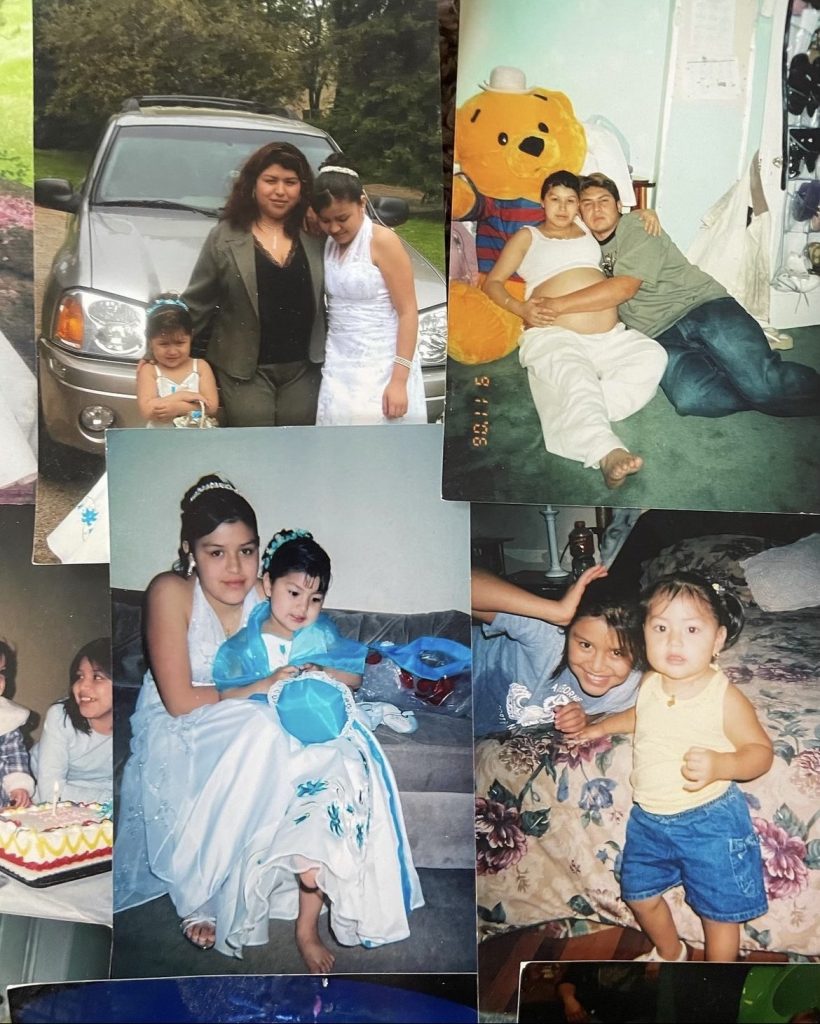
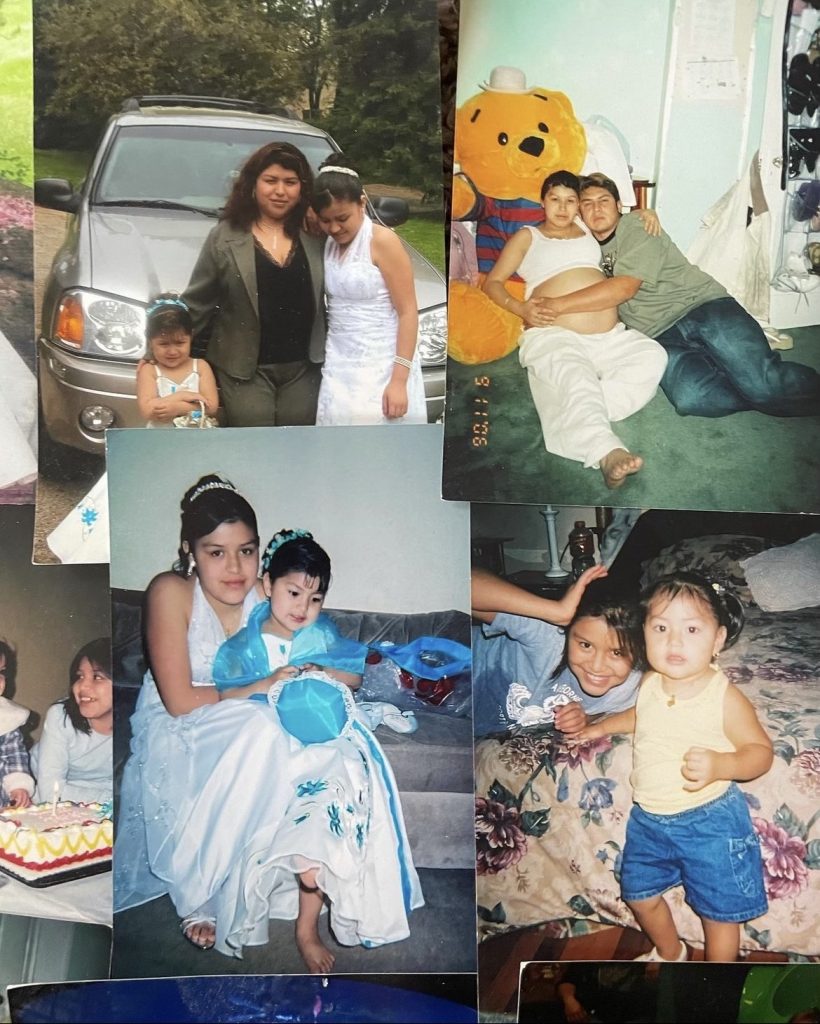
by Jovana Peregrina (Para español vaya abajo)
A mother who didn’t graduate elementary school, a father who only finished high school, and grandparents who didn’t attend school. All of the sacrifices made so I can get an opportunity to accomplish what they couldn’t. My parents left their homeland to come to a country unknown to them. They arrived with no idea how to speak the language, how the currency worked, or how things were managed. They came with a goal, that my younger siblings and I can have opportunities.
It’s only three words, “I don’t know.” As simple as it appears, it’s more complex than that because it’s a mix of emotions. All the uncertainty I feel in my heart and soul is more than one can imagine. Being first generation is stressful because everyone is waiting for me to accomplish something greater. It’s this feeling of not wanting to make the wrong choice; I don’t want to regret the choices I make for my future. Everyone around me is so sure what they want and I sit here constantly thinking about what I’m going to do. People tell me what I should be, but what about what I want? Why do people want to dictate my life? There is no manual on how to apply to school or know what college fits you or what you need to look for in a college. There isn’t a manual to help me navigate all of the unknown. I now have to write a college essay that expresses who I am, while still finding out who I am. What is my purpose? I’m still searching for who I can be and my goal is for my future.
All I can imagine is what my mom suffers everyday. She left everything known to her to live in an unknown country. She left her family behind knowing she can never see them. She headed into the unknown without a thought. No more kisses from mom, no more hugs from dad. All you can do is see them from afar. She watches all her family pass away one by one and is not able to grieve. The unknown is what scares me because I’m used to knowing what comes next. Not knowing this part of life, this next chapter of life, is what scares me the most. I’m growing up and leaving the nest. I understand we all grow u but I want to hold on to my parents a little longer before I walk into the unknown. I want them to know that I’ll be okay without them and they don’t need to worry.
As I keep walking into the unknown I see all these memories as a kid and just laugh. The memories of being a kid and having no thought of the world yet. The further I go into the unknown, the further away my parents get. Right now I sit in the kitchen writing this, watching my mom dance with no care and smiling. My dad laughs knowing he found the person that will always make him smile. These moments are the ones that I want that last an eternity because I know after the unknown there is light and peace. Now it’s my turn to find my journey through the unknown.

Español
Una madre que no se graduó de la escuela primaria, un padre que solo terminó la escuela secundaria y abuelos que no asistieron a la escuela. Todos los sacrificios hechos para que yo pueda tener la oportunidad de lograr lo que ellos no pudieron. Mis padres dejaron su tierra natal para venir a un país desconocido para ellos. Llegaron sin tener idea de cómo hablar el idioma, cómo funcionaba la moneda o cómo se manejaban las cosas. Vinieron con un objetivo, que mis hermanos menores y yo podamos tener oportunidades.
Son solo tres palabras, “No lo sé”. Tan simple como parece, es más complejo que eso porque es una mezcla de emociones. Toda la incertidumbre que siento en mi corazón y alma es más de lo que uno puede imaginar. Ser la primera generación es estresante porque todos esperan que yo logre algo más grande. Es este sentimiento de no querer tomar la decisión equivocada; No quiero arrepentirme de las decisiones que tomo para mi futuro. Todos los que me rodean están muy seguros de lo que quieren y me siento aquí pensando constantemente en lo que voy a hacer. La gente me dice lo que debo ser, pero ¿qué pasa con lo que quiero? ¿Por qué la gente quiere dictar mi vida? No hay un manual sobre cómo aplicar a la escuela o saber qué universidad se adapta a ti o qué necesitas buscar en una universidad. No hay un manual que me ayude a navegar todo lo desconocido. Ahora tengo que escribir un ensayo universitario que exprese quién soy, sin dejar de descubrir quién soy. ¿Cuál es mi propósito? Todavía estoy buscando quién puedo ser y mi objetivo es mi futuro.
Todo lo que puedo imaginar es lo que mi mamá sufre todos los días. Dejó todo lo que conocía para vivir en un país desconocido. Dejó atrás a su familia sabiendo que nunca podrá verlos. Se dirigió a lo desconocido sin pensarlo. No más besos de mamá, no más abrazos de papá. Todo lo que puedes hacer es verlos desde lejos. Ella ve morir a toda su familia uno por uno y no puede llorar. Lo desconocido es lo que me asusta porque estoy acostumbrado a saber lo que viene después. No saber esta parte de la vida, este próximo capítulo de la vida, es lo que más me asusta. Estoy creciendo y dejando el nido. Entiendo que todos crecemos, pero quiero aferrarme a mis padres un poco más antes de caminar hacia lo desconocido. Quiero que sepan que estaré bien sin ellos y que no necesitan preocuparse.
Mientras sigo caminando hacia lo desconocido, veo todos estos recuerdos de niño y solo me río. Los recuerdos de ser un niño y no haber pensado en el mundo todavía. Cuanto más me adentro en lo desconocido, más se alejan mis padres. Ahora mismo me siento en la cocina escribiendo esto, mirando a mi mamá bailar sin cuidado y sonriendo. Mi papá se ríe sabiendo que encontró a la persona que siempre lo hará sonreír. Estos momentos son los que quiero que duren una eternidad porque sé que después de lo desconocido hay luz y paz. Ahora es mi turno de encontrar mi viaje a través de lo desconocido.
Jovana Peregrina
I’m Jovana Peregrina but you can call me Jovy. I’m a senior at Upper Merion Area High School and a student at CCATE.
Strategies for the Protection of Refugees, Asylum Seekers, and the Stateless
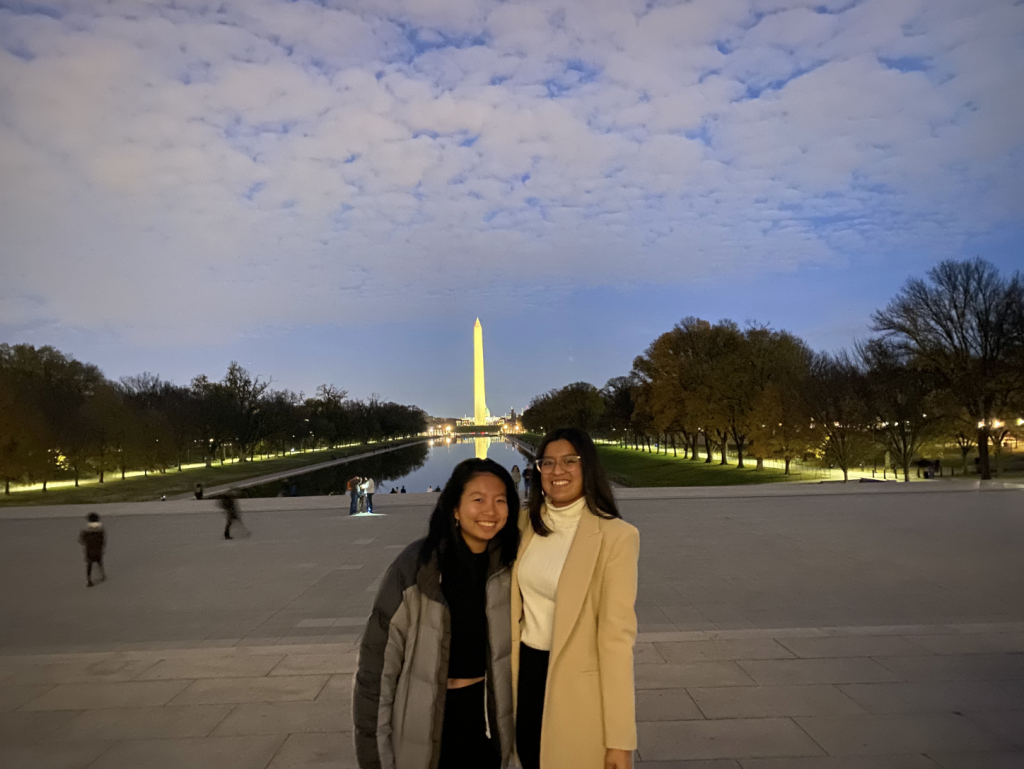
Editor’s Note:
In 2017, the high school students of CCATE had the opportunity to meet diplomats from the Organization of American States (OAS), and the then director of the Department of Latin American and Latinx Studies at the University of Pennsylvania (UPenn), Dr. Tulia Falleti. The result of these meetings was the invitation to four CCATE high school students to participate in the Model Organization of American States (Model OAS) at UPenn, every year with college students and high school students from throughout Philadelphia.
That first generation marked a watershed moment for the CCATE program as it meant that four high school students (Dulce González, Pamela Gómez, Diego Ledesma, and Alex Nepumoceno) would be the first CCATE students to take a class at the university level at one of the best universities in the world, UPenn, the nation’s first Ivy League university founded by Benjamin Franklin.
From 2018 to 2022, about twenty CCATE students have participated in Model OAS as an opportunity to think about attending university, have a real college experience, and deepen their roots of origin and learn about the social, cultural, political, scientific, and technological thoughts of Latin America. CCATE students attend the class financed by the now Center for Latin American and Latinx Studies.
Through the years, the CCATE youth program seeks to open doors and opportunities for students, knowing that we are planting seeds of knowledge. On this occasion we share the testimony and experience of Sara Sandoval Rico who was one of the representatives of the CCATE cohort at Model OAS at UPenn during the fall semester of 2022.
After years of being the global leader in the resettlement of refugees, the United States, under the Trump administration, reduced the maximum number of refugee spots in an effort to protect American jobs during the pandemic. These efforts were part of Donald Trump’s Make America Great Again (MAGA) rhetoric– through which he seeked to prevent anyone who was not a U.S. citizen from entering U.S. territory under any circumstance. During his time in office, the number of refugees went down to only 15,000 refugee spots, which was a record low. Trump also created a travel ban that affected the Muslim minority the most. On the other hand, our current administration has found it difficult to do a complete change of the policies put in place by the previous administration. Not only has President Biden committed to resettle 125,000 refugees and 70,000 Afghans, but he also repealed former President Trump’s travel ban. However, he has received backlash from activists who don’t believe the measures he has taken are enough.
Despite the fact that the United States has announced its plans to welcome up to 100,000 Ukrainians through the full range of legal pathways, including the U.S. Refugee Admissions Program, they are only allowing entry to people with a valid visa or authorization. The ultimate goal of this is to temporarily resettle migrants within the United States. Resettlement organizations have condemned the action, pointing out that the administration should be supporting the refugee admissions procedure rather than depending on humanitarian parole. The policy director at the International Refugee Assistance Project, Sunil Varghese stated, “The administration cannot continue to lurch from one crisis to another without increasing overall capacity for permanent protection in the United States. Today’s announcement suggests that if the Biden administration wants to make refugee protection a priority, it can find a way to get there.” However, these resettlement organizations still say that the U.S. has certain obligations to all asylum seekers, not just those in Ukraine.
Many activists have requested the return of undocumented immigrants wrongfully deported under Trump, stopping detention of asylum-seekers, expanding the Obama-era Deferred Action for Childhood Arrivals program, and granting temporary protected status to protect more undocumented immigrants. They also expressed concern due to the fact that although Biden has promised to reverse Trump’s most restrictive immigration policies, he didn’t include immigration as one of his top priorities which really makes us question if he takes the issue seriously. The director of immigration and cross border policy at the Bipartisan Policy Center, Theresa Cardinal Brown commented, “Activists are going to be active. That’s their job. Their job is to try to push as hard as they can, … But reality for the party and governance is they have to balance those demands with what they can actually get done.”
I Saw A Star
por Alison Calderón-López
It was a star.
Only I didn’t know that because I can’t see stars.
“No mas los intelligentes pueden ver las estrellas. Los puedes ver?”
No I can’t see them.
I am dumb. I cant see stars yet. Just like how I couldn’t see through all those convincing lies you’ve told me. It was truly amazing to see how it all played out. I don’t know you, but you’ve really outdone yourself with the performance you put out. The time and energy I have wasted is the one thing I’ll never be able to get back. Not to mention my sanity. The most incredible thing I have observed is that I’ve written so many things about you, but yet I still find myself writing more. You haven’t thought about me once. I know that. It irks me to believe that you don’t care. You never did. Although I want to hate you, I can’t. But I don’t like you either. I guess you could say it’s in between and you can say that because that’s what it is. “In between”. All this goes to prove that I am dumb. I am coming to a conclusion. I was tricked. You made me realize that I am not in fact dumb. Because If I were stupid, I wouldn’t be sitting here writing about this. If I were dumb, I would be texting, probably be begging for an answer on why you did this to me. If I were dumb, I would have gone to see you again. But the one thing that made me realize that I wasn’t stupid was when that night I looked up into the sky, and I didn’t see any satellites or planes. I remember now, I saw a star.
Alison Calderón-López
Alison is 13 years old and a student at the Centro de Cultura Arte Trabajo y Educacion.
El Lienzo de Tlapalli
por Leticia Roa Nixion
Click here for English version
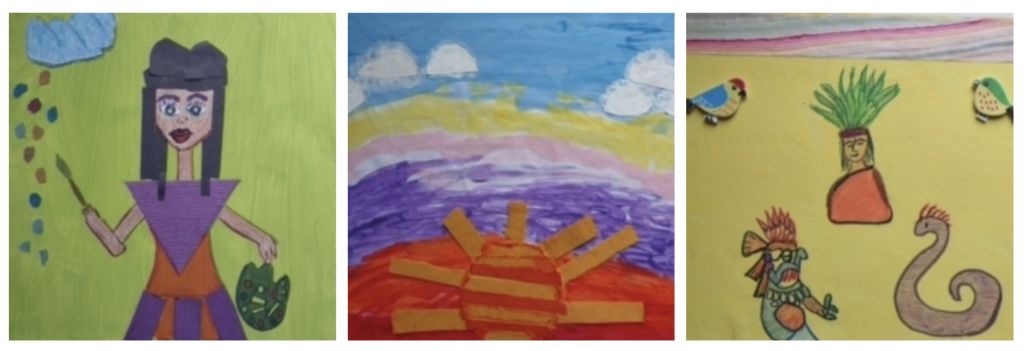
Una vez hace mucho, pero mucho tiempo, el cielo era de color negro obsidiana. No había nubes ni la claridad generada por los rayos del sol.
Un día la joven Tlapalli,que amaba los colores, se encaminó a ver al emperador de la Gran Tenochtitlan.
–Con el debido respeto,empezó diciendo, no es posible tener un cielo tan oscuro donde solo las estrellas brillen. ¡A ese enorme espacio le falta luz y color!, exclamó con emoción incontenible.
Ometecuhtli la miró un poco divertido por usar un tono tan alto de voz en su presencia. La recordó de niña cuando le pedía, con ese mismo tono, dejarla ir a donde se reunían los tlacuillos para que la enseñarán a dibujar los códices que a través de dibujos transmitían la historia de los pueblos creados hace miles de años.
–Tlapalli, mi querida hija, entonces qué sugieres que hagamos, le preguntó con paciencia.
– Propongo que todos los días me permitas usar el cielo como lienzo para tener variedad de tonos anaranjados, violetas, azules y rosas. Pintar nubes de diferentes formas y colorear los arcoiris que aparecerán en el cielo, explicó a su padre.
– Mmmhh. Me gustaría ver algunos de esos dibujos mañana y así consultar con el Concilio Supremo.
El rostro de Tlalpalli se iluminó con gran alegría al escuchar las palabras de su padre. Se despidió con gran solemnidad como era debido para demostrar respeto al máximo gobernante. Al salir del palacio, corrió al mercado de la Gran Tenochtitlan donde estaban los vendedores de los colores.
Les contó su proyecto de pintar el cielo de xiuhuitl (azul) tlatlauhqui (rojo), matlaxochitl (violeta), xiuhtic(turquesado) iztac(blanco), xochipalli(rosa) y zacatazcalli (amarillo) todos los días.
Compró con granos de cacao, que era la moneda, los colores que necesitaba y el papel amate. Acompañada de sus doncellas regresó a su recinto en el palacio de su padre Ometecuhtli. Una vez en su cuarto, Tlapalli comenzó a dibujar el cielo al amanecer, luego durante el día y al final el atardecer usando la gran variedad de tonos que harían del cielo una pintura celestial.
Trabajó toda la tarde y la noche para tener listo “El Lienzo de Tapalli” para presentarlo a los distinguidos invitados de su padre.
Ometecuhtli había convocado la reunión en su palacio real con sus bellas habitaciones, patios y jardines.
Recibió a cada uno de ellos y con un movimiento de su bastón de mando les indicó su asiento de acuerdo a su jerarquía.
Tlalpalli estaba parada al lado de su padre sujetando nerviosamente sus rollos de papel amate con sus manos. A una señal de Ometecuhtili, la joven princesa caminó al centro del salón donde sus doncellas extendieron y sostuvieron sus dibujos para que todos pudieran verlos.
La primera en hablar fue “La Serpiente de las Aguas Celestiales” quien tras mirar el lienzo con detenimiento, siseó su pregunta.
–Tlapalli, ¿qué pasará con tus bellos colores cuando haya una fuerte tormenta tiñiendo el cielo de negro y grises oscuros? Y continuó con firmeza diciendo que el cielo cambia durante la temporada de lluvias. Como regidora de las aguas celestiales quería estar segura que el cielo no fuera tan colorido.
–Venerable Serpiente las Aguas Celestiales, en ese caso mi lienzo también incluirá los colores de acuerdo a los cambios del clima que suceden a diario. Acepto con humildad sus recomendaciones.
Sentados junto a Tlaloc estaban los Cuatro Tlaloques que ayudaban a su señor a distribuir la lluvia sobre la tierra, portando grandes vasijas llenas de agua que rompen a palos para derramarla sobre la tierra provocando lluvias y el sonido de los relámpagos.
–Nosotros te avisaremos cuando sea el tiempo de vertir el agua para que tengas tiempo de pintar un cielo oscuro, de tonos grises mezclando el color negro con el blanco, le ofrecieron a Tlapalli.
–Venerables Tlaloques, su ofrecimiento será de gran ayuda para estar lista con mi paleta de tonalidades días antes de las tormentas.
Xochiquetzal, protectora de los tlacuilos, fue la siguiente en hablar.
–Hija del gran Ometecuhtli que te he visto crecer aprendiendo de los tlacuilos, los que escriben pintando los códices, te ofrezco sugerencias de colores para tu lienzo. El color negro tlilli, creado por humo de astilla de pino. La grana cochinilla, insecto parásito del nopal, para el color rojo y las flores matlaxochitl que brindan el color turquesa intenso llamado texotli.
También enviaré desde las costas de Oaxaca los caracoles púrpura cuyo tinte te servirá para matizar tu lienzo con ese color durante las puestas del sol, antes de que oscurezca.
El señor del gremio de los tlacuilos también brindó su ayuda.
– PrincesaTlapalli, cuentas con nosotros para ayudarte a dibujar las nubes en sus diversas formas y ayudar a pintar los atardeceres que diseñes.
Al ver el apoyo que el Concilio Supremo le estaba brindando a su amada hija, Ometecuhtli habló.
–A partir de hoy haré traer todos los días los materiales que necesiten los preparadores de colores para que el cielo tenga el colorido diferente que tanto anhelas.
Al día siguiente, con la ayuda de los tlacuilos, de los artesanos y los astrónomos el Lienzo de Tlapalli cubrió la bóveda celeste para el deleite de los habitantes de este planeta Tlalli, la Tierra. Desde entonces disfrutamos de amaneceres y atardeceres creados por el pincel de la princesa Tlapalli que ama la gama de colores que ofrece la naturaleza.
English Version:
Once, a long, long time ago, the sky was obsidian black. There were no clouds nor the brightness generated by the sun’s rays.
One day, the young Tlapalli, who loved colors, set out to see the emperor of the Great Tenochtitlan.
“With due respect,” she began, “it is not possible to have such a dark sky where only the stars shine. This enormous space lacks light and color!” she exclaimed with uncontrollable emotion.
Ometecuhtli looked at her, slightly amused by her high tone of voice in his presence. He remembered her as a child, asking in that same tone to be allowed to join the tlacuilos, so they could teach her to draw the codices that conveyed the history of the peoples created thousands of years ago through drawings.
“Tlapalli, my dear daughter, then what do you suggest we do?” he asked patiently.
“I propose that every day you allow me to use the sky as a canvas to have a variety of orange, violet, blue, and pink tones. To paint clouds of different shapes and color the rainbows that will appear in the sky,” she explained to her father.
“Mmmhh. I would like to see some of those drawings tomorrow and then consult with the Supreme Council.”
Tlalpalli’s face lit up with great joy upon hearing her father’s words. She bid farewell with great solemnity, as was proper to show respect to the supreme ruler. Upon leaving the palace, she hurried to the market of the Great Tenochtitlan where the color sellers were.
She told them about her project to paint the sky xiuhuitl (blue), tlatlauhqui (red), matlaxochitl (violet), xiuhtic (turquoise), iztac (white), xochipalli (pink), and zacatazcalli (yellow) every day.
She bought with cacao beans, which was the currency, the colors she needed and the amate paper. Accompanied by her maidens, she returned to her quarters in the palace of her father Ometecuhtli. Once in her room, Tlapalli began to draw the sky at dawn, then during the day, and finally at sunset using the wide variety of tones that would make the sky a celestial painting.
She worked all afternoon and night to have “The Canvas of Tlapalli” ready to present to her father’s distinguished guests.
Ometecuhtli had convened the meeting in his royal palace with its beautiful rooms, patios, and gardens.
He greeted each of them and with a movement of his staff indicated their seat according to their hierarchy.
Tlalpalli stood next to her father, nervously holding her rolls of amate paper in her hands. At a sign from Ometecuhtili, the young princess walked to the center of the room where her maidens spread out and held up her drawings for all to see.
The first to speak was “The Serpent of the Celestial Waters” who, after carefully looking at the canvas, hissed her question.
“Tlapalli, what will happen to your beautiful colors when there is a strong storm turning the sky black and dark gray?” And she continued firmly saying that the sky changes during the rainy season. As the regent of the celestial waters, she wanted to make sure that the sky was not too colorful.
“Venerable Serpent of the Celestial Waters, in that case, my canvas will also include colors according to the daily weather changes. I humbly accept your recommendations.”
Seated next to Tlaloc were the Four Tlaloques who helped their lord distribute the rain over the earth, carrying large vessels filled with water that they break with sticks to pour it over the earth, causing rains and the sound of thunder.
“We will notify you when it is time to pour the water so that you have time to paint a dark sky, with gray tones mixing black with white,” they offered Tlapalli.
“Venerable Tlaloques, your offer will be of great help to be ready with my palette of shades days before the storms.”
Xochiquetzal, protector of the tlacuilos, was the next to speak.
“Daughter of the great Ometecuhtli whom I have seen grow up learning from the tlacuilos, those who write by painting the codices, I offer you suggestions of colors for your canvas. The black color tlilli, created by smoke from pine splinters. The cochineal insect, a parasite of the cactus, for the red color and the matlaxochitl flowers that provide the intense turquoise color called texotli.
I will also send from the coasts of Oaxaca the purple snails whose dye will serve you to shade your canvas with that color during sunsets, before it darkens.
The lord of the tlacuilo guild also offered his help.
“Princess Tlapalli, you have us to help you draw the clouds in their various shapes and help paint the sunsets you design.”
Seeing the support the Supreme Council was giving his beloved daughter, Ometecuhtli spoke.
“From today, I will bring every day the materials that the color preparers need so that the sky has the different coloring you so desire.”
The next day, with the help of the tlacuilos, artisans, and astronomers, the Canvas of Tlapalli covered the celestial vault to the delight of the inhabitants of this planet Tlalli, the Earth. Since then, we enjoy sunrises and sunsets created by the brush of Princess Tlapalli who loves the range of colors offered by nature.
Glosario
La Gran Tenochtitlan- la ciudad que fundaron los aztecas en 1345 en medio del Lago de Texcoco y hoy es conocida como la ciudad de México.
Nahuatl- es un idioma uto azteca que se habla en México y Centroamérica.
Ometecuhtli– palabra nahuatl que significa el Señor de la Dualidad o el Señor de la Vida.
Tlacuilos- eran hombres y mujeres que sobresalían en el dibujo y eran entrenados en el idioma. Tlacuilo es el que escribe pintando.
Tlalli- palabra nahuatl que significa Tierra.
Tlaloc- deidad azteca de la lluvia.
Tlaloques- en la mitología mexica, eran quienes ayudaban a Tlaloc en la difícil tarea de distribuir la lluvia sobre la tierra.
Tlapalli- palabra nahuatl que significa color.
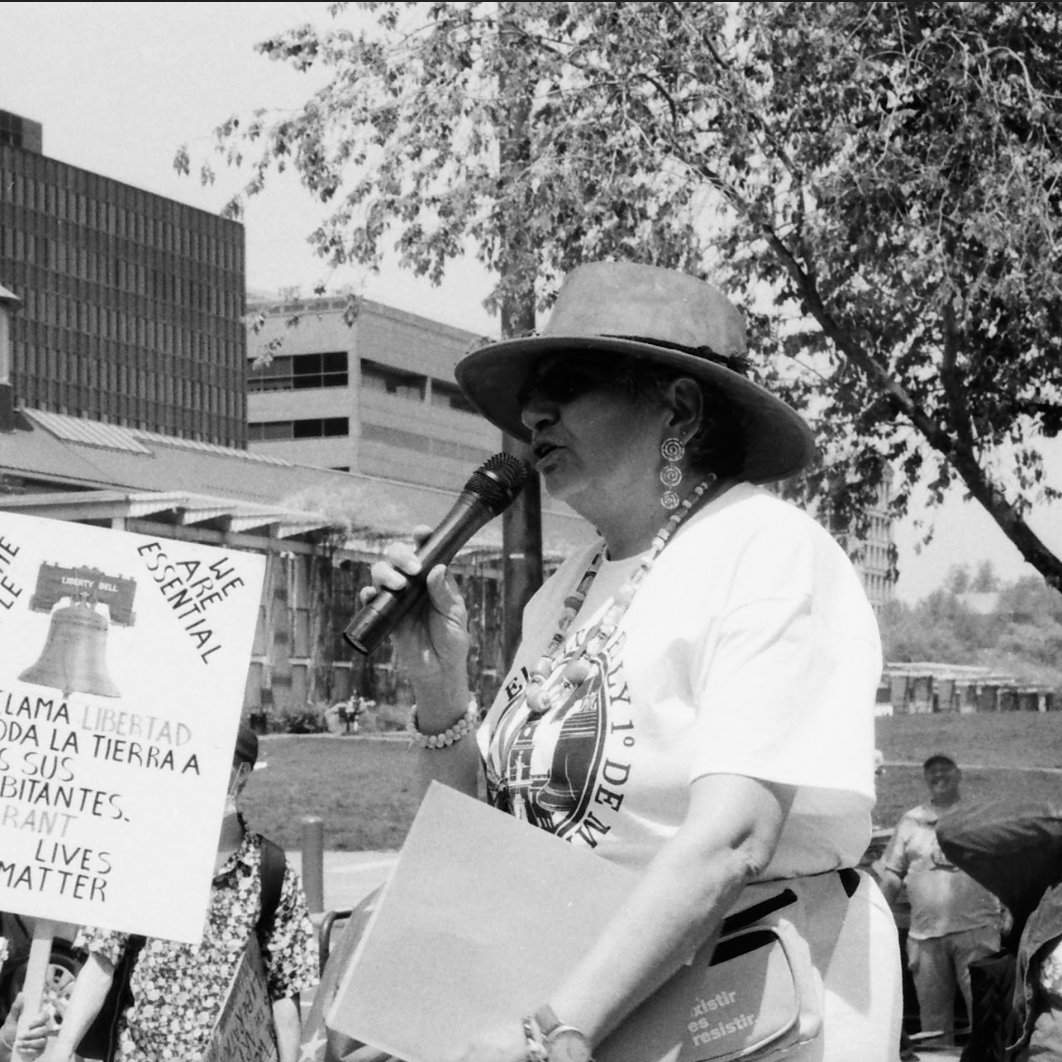
Leticia Roa Nixon
Leticia Nixon, nacida en la Ciudad de México, cursó la carrera de comunicación en la Universidad Iberoamericana. Desde 1992 se dedica al periodismo comunitario de Filadelfia. Es autora de seis libros y video productora de PhillyCAM. Escribe para philatinos.com y reside en Swarthmore, Pa.
Selected Works by Leticia Nixon:
Cuando los Tejidos Hablan (When Fabrics Speak)
Berenice, La Danzante Azteca (Berenice, The Aztec Dancer)
Huracán Corazón Del Cielo (Huracán, Heart of the Sky)